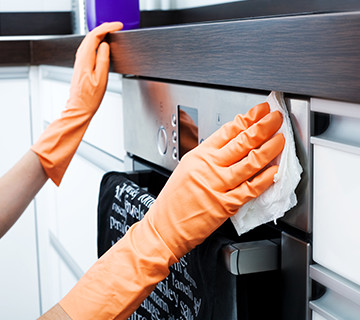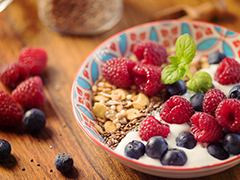Boiling Down Food Safety

Keeping foods clean, cool and disease-free is just as much a part of the nutritional experience as cooking and eating. So we’ve boiled it down to four easy steps that help you handle and prepare food safely.
CLEAN
Before you start, make sure your surfaces and equipment are clean. Scrub your appliances inside and out, making sure to clean the parts you touch. This includes handles, buttons and plugs, where cross-contamination may occur. Sanitize your countertop and cutting boards with warm soapy water. You can also use a tablespoonful of bleach in a gallon of water for deep cleaning. Now, wash your hands. Lather up your hands with soap and scrub all the parts – don’t skip your palms or in between your fingers. Rinse with warm water and dry thoroughly. And finally, the food. Rinse all vegetables and fruits thoroughly, even if you plan to peel them or cook them. This can reduce the chances of contaminants from the outside of your food finding their way inside.
SEPARATE
Separating foods starts at the grocery store. Put raw meats and seafood into plastic bags to prevent cross-contamination. And when you get them home, store them in the refrigerator below ready-to-eat foods so that they don’t drip or otherwise spoil your other foods. When prepping to cook, use one clean cutting board for produce and a different one for poultry or raw meat. And after your food is cooked, make sure it goes onto a clean plate, not the one you used to store or prepare it.
COOK
Now to the fun part, cooking your food. At this stage, a meat thermometer is an indispensable kitchen tool. It can help you make sure your food is fully cooked and kept at the proper temperature when you’re storing it to eat later. Insert the thermometer into the thickest part of the cut, making sure not to touch it to the pan or a bone. Beef, pork and lamb steaks, chops or roasts should be cooked to an internal temperature of 145 °F, while ground versions of those meats should be cooked to 160 °F. Poultry, including chicken and turkey, needs to be cooked to 165 °F for safety.
CHILL
When serving later, keep cold foods under 40 °F and hot foods above 140 °F. If your foods have been in the “danger zone” (40 °-140 °F) for more than two hours, they are no longer safe to eat.
As you can see, there’s a lot to consider when prepping, cooking and storing your food. Follow these easy steps to reduce your risks of foodborne illnesses.
Article source link has expired.


